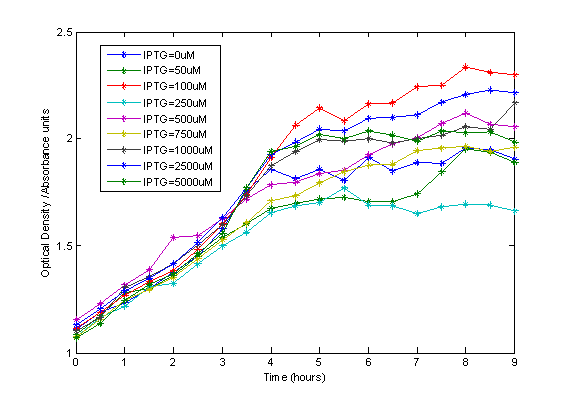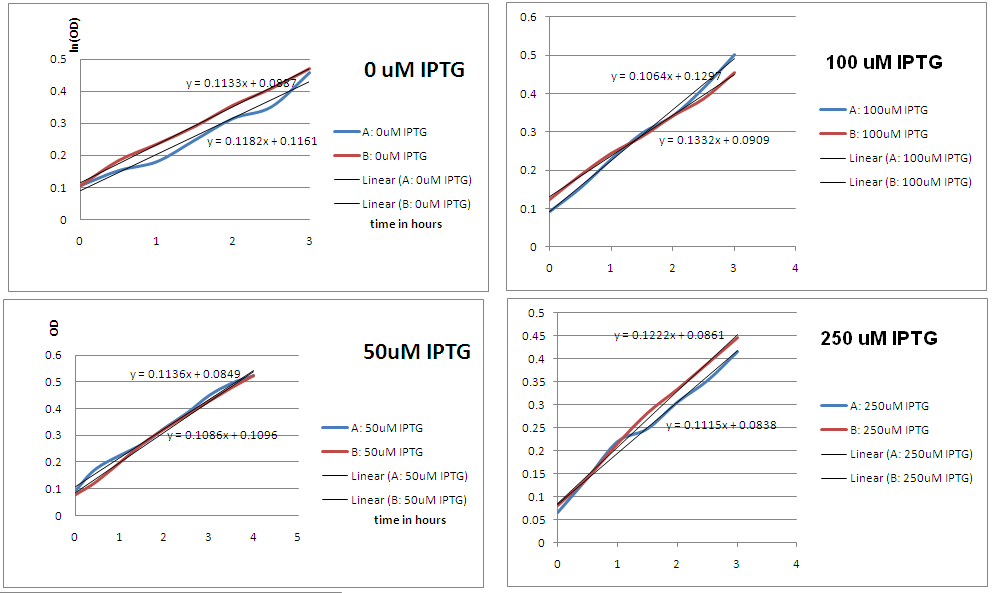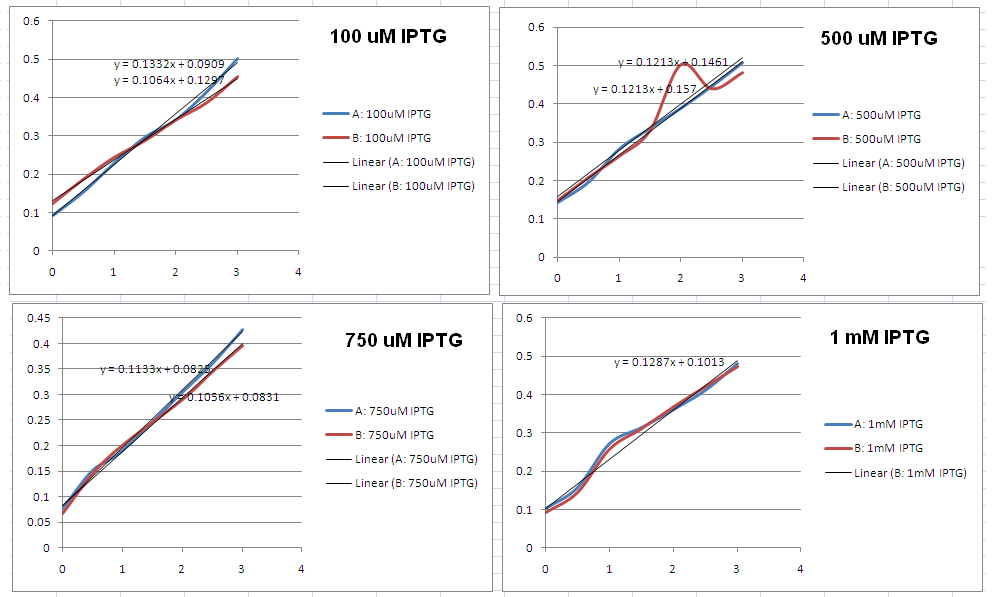Team:Imperial College London/Wetlab/Results/Cheminduction
From 2009.igem.org
(→Conclusion) |
(→Experiment:) |
||
| Line 1: | Line 1: | ||
{{Imperial/09/TemplateTop}} | {{Imperial/09/TemplateTop}} | ||
| + | <br><br> | ||
=Experiment:= | =Experiment:= | ||
Different concentrations of IPTG were added to a 96-well plate of e-coli Top 10 cells containing LacI-RFP genetic constructs. Here we measured the optical density of the cells over-time, for different concentrations of IPTG to monitor the effects in the culture. The IPTG growth curve results are plotted below:<br> | Different concentrations of IPTG were added to a 96-well plate of e-coli Top 10 cells containing LacI-RFP genetic constructs. Here we measured the optical density of the cells over-time, for different concentrations of IPTG to monitor the effects in the culture. The IPTG growth curve results are plotted below:<br> | ||
Latest revision as of 21:03, 20 October 2009

Contents |
Experiment:
Different concentrations of IPTG were added to a 96-well plate of e-coli Top 10 cells containing LacI-RFP genetic constructs. Here we measured the optical density of the cells over-time, for different concentrations of IPTG to monitor the effects in the culture. The IPTG growth curve results are plotted below:

Figure 1: Effects of [IPTG] on cell growth: Note that the high initial OD value results due to cultures having grown for 1 hour prior the start of the measuring phase.
Analysis
Simply plotting the raw data does not give sufficient information about possible trends.
Therefore, further analysis was performed where:
1. The blank absorbance level was estimated

Figure 2: Variation of the blank well data in monitoring absorbance A1, A2, B1, B2: 4 wells containing blank M9 media.
2. We can see from figure 1 that there is an exponential growth phase that lasts for about 3 hours, so in order to extract the trend in growth rate, the ln(Absorbance) data was plotted over these time points (See figures 3,4,5).
3. In order to extract the trend, a linear regression method was applied and the growth rates were calculated.

Figure 3: Log plots of the exponential growth phase for different IPTG concentrations
We can see that the growth rate corresponds to the gradient of the linear phase in the graph. This was done for two parallel wells, hence why we have plotted two parallel lines (Scroll to bottom of the page to see all of the plots).
Results
- Growth rates lie within a range of 0.1-0.2 /hour.
- The standard deviation was found to be: 0.0093
Conclusion
Growth rate does not vary significantly for different concentrations of IPTG. This means that it does not have a significant impact on growth rate.
More Plots

Figure 4: Log plots of the exponential growth phase for different IPTG concentrations

Figure 5: Log plots of the exponential growth phase for different IPTG concentrations
 "
"



